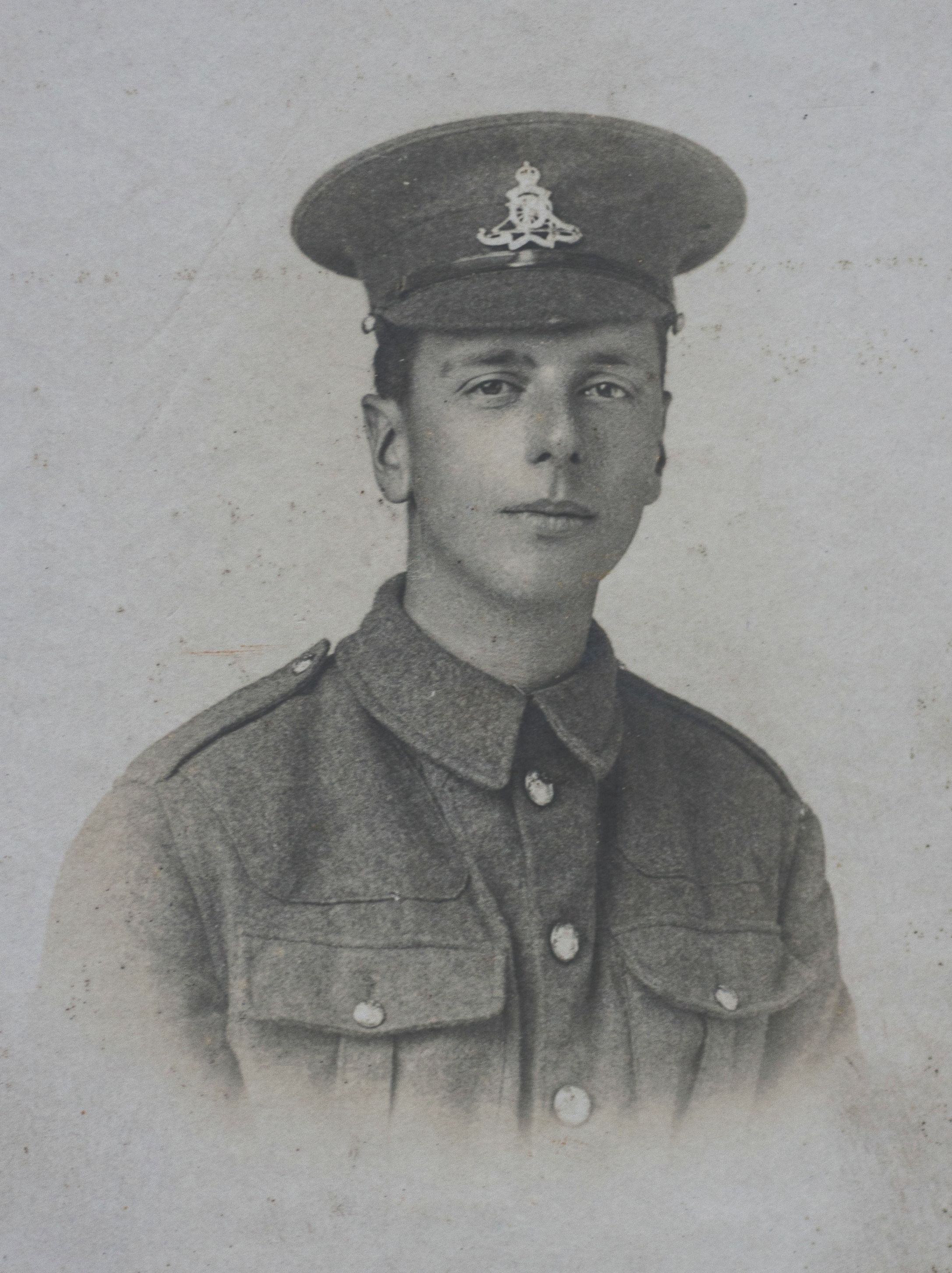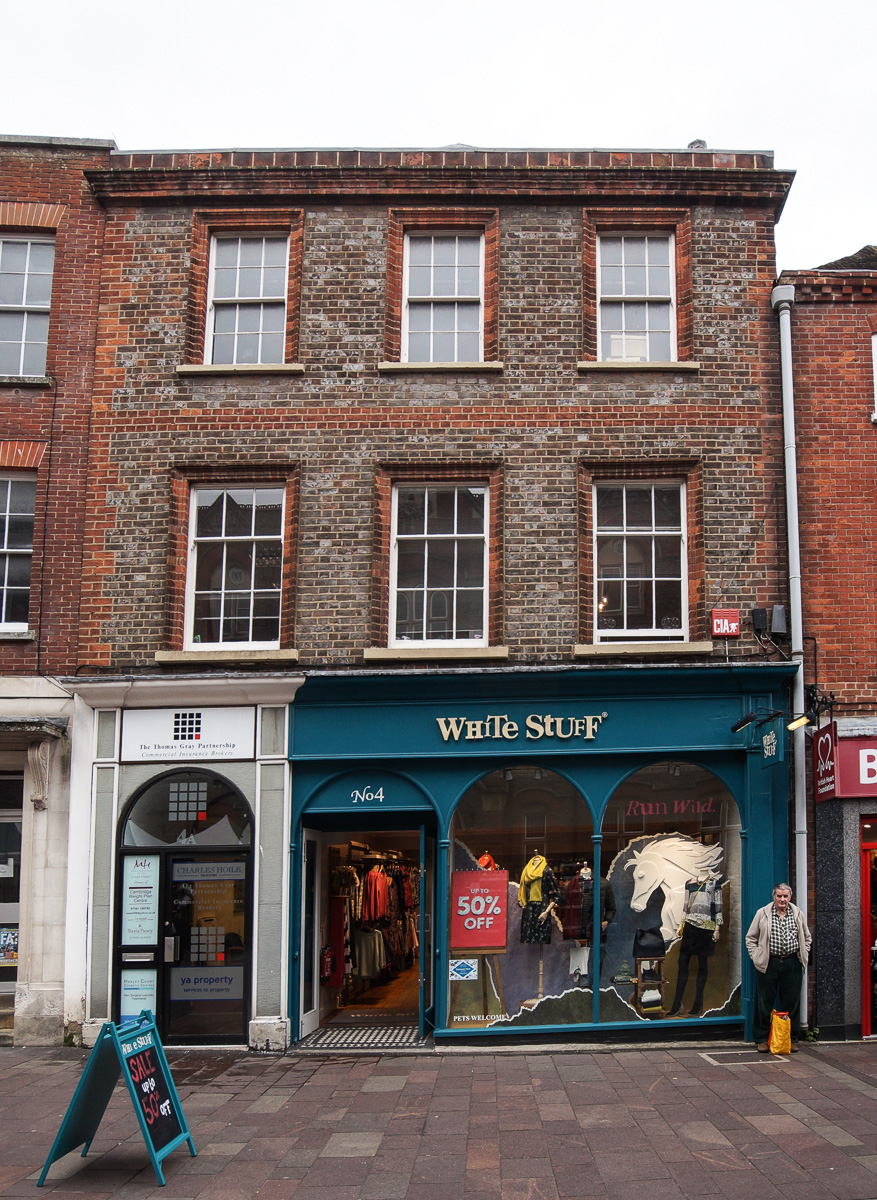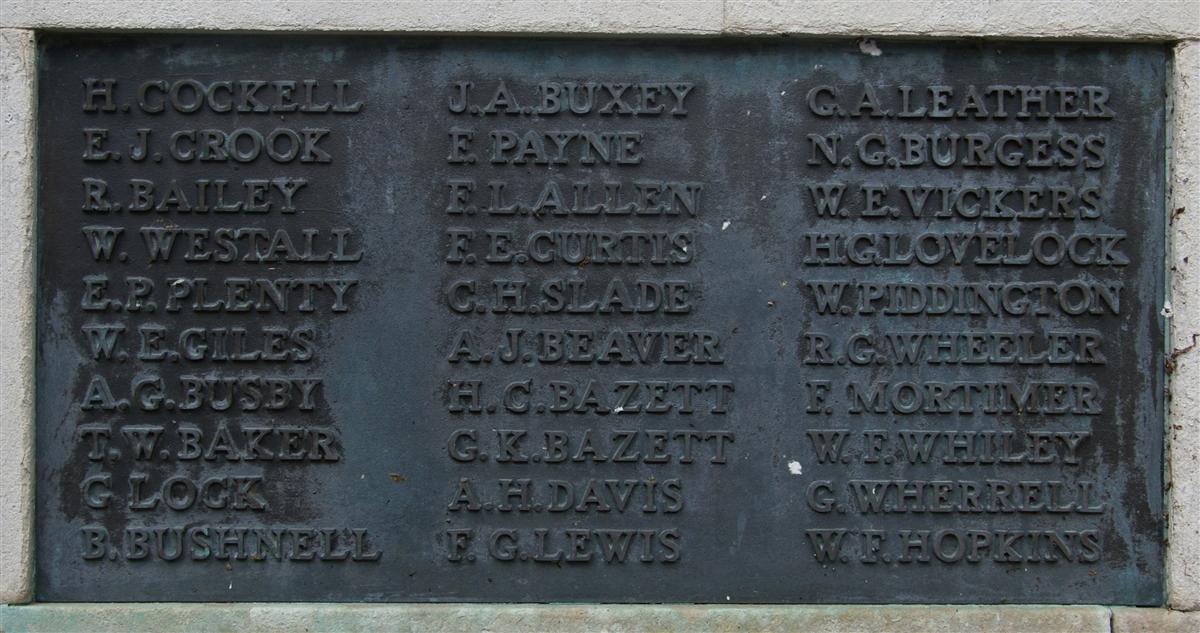William Francis Whiley
Gunner 353511 William Francis Whiley, 270th Siege Battery, Royal Garrison Artillery.

William Whiley. (Kay Lipscombe) |
It is not known how Frank was educated, his absence from the surviving records of local schools makes it clear that he did not attend the National School (St Nicolas’) or the Newbury Grammar School; the most likely alternatives wer the British (nonconformist) School in St John’s Road or a private school. After finishing his education, he joined the family business and trained as a hairdresser, at the time of the 1911 census his occupation was given as ‘hairdressing, assisting in business’, presumably implying a management role in addition to cutting hair. Interestingly he was also able to vote, appearing on the electoral roll as soon as he was old enough as the tenant of a room above the shop. This was a ruse that was often used to gain the right to vote, which depended on a property qualification. As a householder his father qualified, as did lodgers paying above a certain sum – many of the sons of local businessmen benefitted in this way, though one questions whether the qualifying rent ever changed hands.

3 Mansion House Street, formerly the Whiley's premises and home. |
One reason for his reluctance to sign up amongst the initial surge of recruits may have been that romance was in the air. In early 1915 he married Frances Mary Kimber from Speenhamland Farm.
Frank was called up in March 1916 (a little too early to be a conscript) and joined the Hampshire Territorial Battery of the Royal Garrison Artillery. While training on the Isle of Wight he had his picture taken by a local photographer (McLennan of Freshwater).
The 270th Siege Battery, Royal Garrison Artillery (RGA) was formed at Aldershot on 16 October 1916 most of the men coming from the RGA companies stationed at Malta pre-war. The men spent the next 3½ months at training camps in Aldershot and Lydd. At some point Frank became a member of this battery, perhaps he was drafted in to make up the initial numbers, perhaps his posting was later, sadly his service records have not survived so it is not possible to tell. However, all his service overseas was with the 270th Siege Battery; his medal roll entry makes that clear.
In early February 1917 the members of the battery had completed their training as were together at Codford Mobilisation Camp to prepare for deployment to France. Between 7-18 February the battery received its guns, four 6-inch howitzers (manufactured by Vickers). An outbreak of measles in this period resulted in several men transferring out of the battery. On 18 February the transport joined - 2 officers and 46 other ranks from the Army Service Corps, with four lorries to tow the guns and three more for supplies and ammunition. After many more transfers of men in and out of the battery (perhaps including Frank) as the measles epidemic caused havoc, the battery finally arrived at Le Havre in the early morning of 1 March.
Howitzer batteries were principally used to suppress enemy artillery fire, preferably by destroying enemy guns (and gunners), but it was also a success if the enemy were forced to relocate guns thus taking them out of action during the key moments of a battle. Soon after its arrival in France the 270th Siege Battery supported the Canadian Division in its capture of Vimy Ridge.
By March 1918 the battery was sited near Metz en Couture (left section) and Gouzecourt (right section) behind the front facing the much-vaunted Hindenburg Line, the defences to which the Germans had withdrawn in the spring of 1917 following their positional losses at the Battle of the Somme. This was a familiar position, the battery had been there for some months firing on enemy positions as ordered, some days it might be no more than 20 rounds, others a few hundred. In the Army reorganisation of early 1918 the battery became a part of 98th Brigade Royal Garrison Artillery.
On 21 March everything changed with the launch of the German Spring Offensive. This was not unexpected; 270 Battery had been firing ‘harassing’ rounds since 17 March. The idea behind harassing fire was to disrupt the enemy’s assault preparations by making roads and trenches much more dangerous places than was the norm.
The enemy attack came in the early morning of 21 March; aided by fog and new infantry tactics it broke through the British lines along a wide front, soon artillery positions well behind the front line were threatened. From 7.15 pm the batteries of 98 Brigade, including 270 Battery, began to withdraw to positions near Moislains. Prior to this 270 Battery had fired 897 rounds (compared with 50 rounds the previous day). Sadly, the Battery’s diary for this period has not survived so the story of the day has to be inferred from a very sketchy entry the 98th Brigade’s diary, which does not include casualty figures.
Frank died that day – odds are that the enemy’s artillery had targeted the battery in an attempt to put it out of action, which may explain his death, but there are other explanations, some batteries came under enemy small arms fire as they pulled out, it could even have been an accident (a busy battery under strain, hauling heavy guns out of pits and into new positions was a dangerous place even when not under enemy fire).
The news soon reached Newbury, so soon that it is evident that his death had been witnessed by his comrades:
Newbury Weekly News, 4 April 1918 – Local War Notes
Pte F W Whiley, RGA, son of Mr and Mrs Whiley, of Mansion-house-street, is officially reported killed.
In the circumstances the bodies of the dead were not a priority, at best there would be a hasty burial in a shell hole, but many would be left where they died as the battery withdrew. Frank’s body, if it was ever recovered, was never identified so his name is recorded on the Pozieres Memorial to the Missing.
 William's name on Newbury War Memorial. (lower right) |
Back home he was remembered on tablet 9 of the Newbury Town War Memorial, the Speenhamland Shrine (the parish memorial for St Mary’s Speenhamland), the Congregational Church Memorial (now in Newbury Town Hall) and the Shaw Memorial.
His family also added his name to the headstone when his mother, Fanny, was buried in Newtown Road Cemetery. Fanny died on 21 April 1918 aged 55, exactly one month after her son; his father, William, was also buried in the same plot after his death at the age of 81 in 1946.

Find a memorial :
| Died this day: | |
| 19 December 1941 | |
| J H Van | |
| Boxford |

Like this site? Show your appreciation through a donation to a great charity.